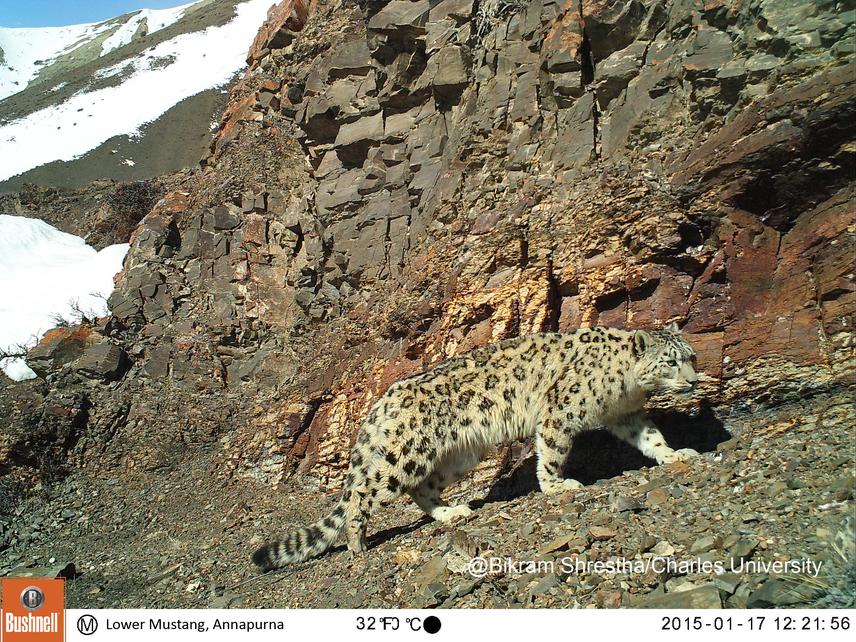Bikram Shrestha
Other projects
5 Aug 2019
Integrating Snow Leopard and Co-Predators (Common Leopard, Wolf and Lynx) Conservation with Livelihood Initiatives in Nepal
The first aim of the proposed project is to study interaction between two closely related species of large cats, the endangered snow leopard and the near threatened common leopard, and the vulnerable lynx which are living as sympatric in Lower Mustang of Annapurna Conservation Area. The second is to assess the effectiveness of adopted human- snow leopard and co-predators conflict mitigation measures and the degree of tolerance towards the predators considering livestock depredation.

Snow leopard. © Bikram Shrestha.
Until recently researcher thought common leopard were moving up to the upper edge of forest line as the lower reaches that snow leopard visit. But it is reported that common leopard do in fact go high up, crossing forest line, which supposed to potential habitat of snow leopard in Lower Mustang of Annapurna Conservation Area (ACA). Common leopards have been captured by remote camera traps at altitude of 4100m in the area. The two closely related species of large cats, the endangered snow leopard and the near threatened common leopard, and the vulnerable lynx are living as sympatric in the area. Now it has raised several management-questions regarding sympatric carnivores’ co-existence and human-wildlife conflict resolution.
One could predict that competition will arise between sympatric carnivores. The adaptable, larger common leopard may dominant over snow leopard. As a consequence, the use of space, activity patterns and social behaviour of the inferior competitor may be altered. The questions now arise: Do common leopards displace snow leopards? What are the factors that may affect co-existence or competition among sympatric carnivores in the human-dominated landscape of Nepal? Would there be enough prey for both cats, and lynx to survive in this area? The results will elucidate a reasonable understanding for how three sympatric carnivores use their habitat as well as how they active spatially and temporally. I will know to explain why particular prey species are preferred or avoided and degree of livestock depredation in the diet on the premise of optimality that allows direct comparison between the causes of prey preferences of three sympatric carnivores.
To combat human-snow leopard and co-predators conflict, various conflict mitigation measures have been implemented in the high mountains of Nepal Himalaya including in Annapurna Conservation Area (ACA). But there is no clear pictures on whether the existing adopted mitigation measures are effective. From my research work, I will identity threats posed by different problem animals. I will know livestock holding patterns and the intensity of livestock depredation by carnivores, existing mitigation measures and the prevailing conservation attitudes among respondents, effectiveness of adopted mitigation measures to combat retaliatory killing of predators in the area and such information is, in turn, expected to greatly facilitate the development of sound guidelines for snow leopard and co-predators conflict mitigation strategies in Nepal Himalaya.